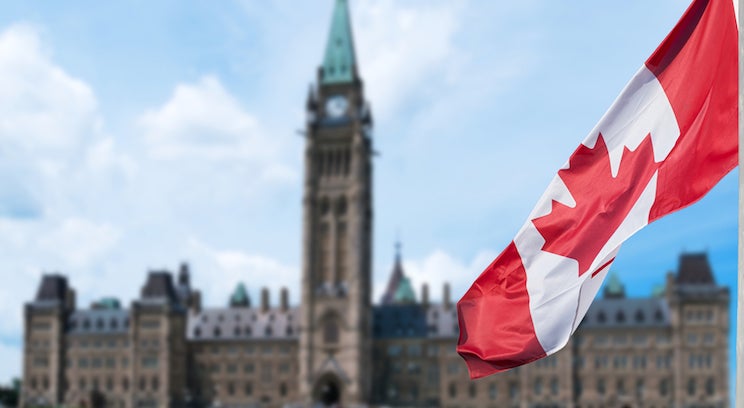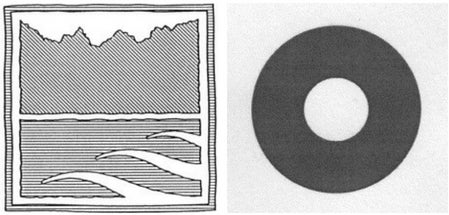
Did you know that in Canada, an application for your trademark can be blocked by a form of trademark that automatically covers all classes, never expires, and cannot be cancelled based on non-use? Section 9 of the Canadian Trademarks Act grants certain public governmental authorities special protection for their trademark registrations, called “official marks,” which are more advantageous than regular trademarks.
What is an official mark and who can own one?
Official marks are trademarks in the name of Canadian public authorities are defined under existing case law as entities under a significant degree of control by a Canadian governmental entity while conducting activity considered to benefit the public*. Thus, a Canadian government agency/organization or entities with a significant degree of control by a Canadian government entity can own these marks, as well as universities (both Canadian and non-Canadian). Examples of official marks include DAYBREAK (Application No. 910388) and STORYWORKS (Application No. 923423), Design Mark, (Application No. 0908246), and O & Design (Application No. 924635).
*The Federal Court of Appeal [Ontario Association of Architects v. Association of Architectural Technologists of Ontario, (2002), 19 C.P.R. (4th) 417 (F.C.A.); reversing (2000), 19 C.P.R. (4th) 417 (F.C.T.D.)]

What protections does an official mark provide and how are they different from regular trademarks?
Official marks are granted extremely broad rights: An application for an official mark does not need to specify the goods or services, and it is presumed that official marks cover all classes (i.e., all goods and services). These marks never expire, do not need to be renewed, and cannot be cancelled for non-use or expunged. Furthermore, an application for an official mark is not subject to examination based on inherent registrability or confusion with an earlier mark. Even descriptive marks can be registered as official marks. The only way that official marks can be terminated is if their owner voluntarily withdraws them.
What happens if an official mark is filed that is similar to your prior mark?
Official marks, even ones that are identical to your prior trademark registration, can be registered. They will be deemed to co-exist with your registered mark but may block any new applications you file for expanded goods or services, despite your ownership of an earlier registration. Note that these new official marks also will act to block new filings by your competitors. This is an unlikely but possible upside of Canada’s law.
Unregistered trademarks that are in use before an official mark is published can continue to be used, but will not be eligible for registration.
What happens if an official mark blocks your application?
If the Canadian Trademark Office cites an earlier official mark against your application, it will serve as an absolute block to your application, regardless of whether you use the mark (i) for different goods/services or (ii) in an industry different than the official mark owner’s.
Can you overcome a refusal based on an official mark?
While you cannot use or register a mark that is identical or similar to an official mark without the consent of the owner, trademark owners may consider the following strategies:
1. Submit arguments that the marks are not similar.
If there is room to argue that the marks are distinguishable. For example, if your mark contains an additional literal or design element, then you may be able to persuade the Examiner to withdraw the refusal. The Canadian Trademark Office recently adopted a policy whereby the Examiner is required to cite the official mark, even if it is clearly not identical. The trademark owner may then submit arguments to prove that the refusal should be withdrawn and that its application should proceed despite the official mark.
2. Obtain the official mark owner’s consent.
Some official mark owners are fairly approachable and willing to grant consent for free or without any conditions, and some may grant consent in exchange for monetary compensation or other consideration. Others may ignore a consent request or flatly reject it without explanation, as they have no obligation to provide consent.
3. File a Federal Court action to argue that the owner has no authority to own an official mark.
A trademark owner can file a Federal Court action to argue that the official mark owner should not be considered a public authority (e.g., argue that the official mark owner is not under “sufficient governmental control”). Canada’s Federal Court has issued recent decisions invalidating official marks on the basis that the official mark owner did not constitute a public authority. For example, in the 2016 case Starbucks (HK) Limited and Trinity Television Inc., 2016 FC 790, Starbucks (a broadcasting company, not the famous coffee company) filed suit after the Canadian Trademark Office refused its application for NOW TV & Design (featured below), based on the official mark NOWTV.

Canada’s Federal Court invalidated the official mark, finding that the official mark owner should not have been considered a “public authority” as defined by the Canadian Trademarks Act. While filing a federal court action is expensive, this decision shows it is a possible avenue to challenge official marks.
4. Behind-the-scenes influence on the official mark owner.
As mentioned above, a Canadian government agency itself or a non-government organization under the substantial control of a governmental agency can own an official mark. If an official mark owned by the latter entity blocks your trademark application, you can consider contacting the governmental agency funding the official mark owner and explain the situation to attempt to persuade the owner to offer its consent; but of course, such consent is not guaranteed.
5. Consider re-filing for the mark with an additional element.
An application for a mark that is identical to an official mark may be blocked without room to argue based on the differences in the marks. However, an application for a mark that overlaps with an official mark but has some distinguishing factor (e.g., an additional distinctive design element) may be sufficient to prevent a refusal based on an official mark or at least open the door for arguments in the event of a citation.
Recommendations
Canada made recent changes to its trademark law, which will become effective in early 2019. However, none of the changes will affect Section 9, the section relating to official marks, and the Canadian government has made no indication that it will make such changes anytime soon. In light of the current law, brand owners should consult with trademark counsel to first conduct trademark searches to determine whether any official marks could be an obstacle and consider a strategy in Canada.
The authors would like to thank Monica Richman, partner at Dentons, for her contributions to and review of this article.





